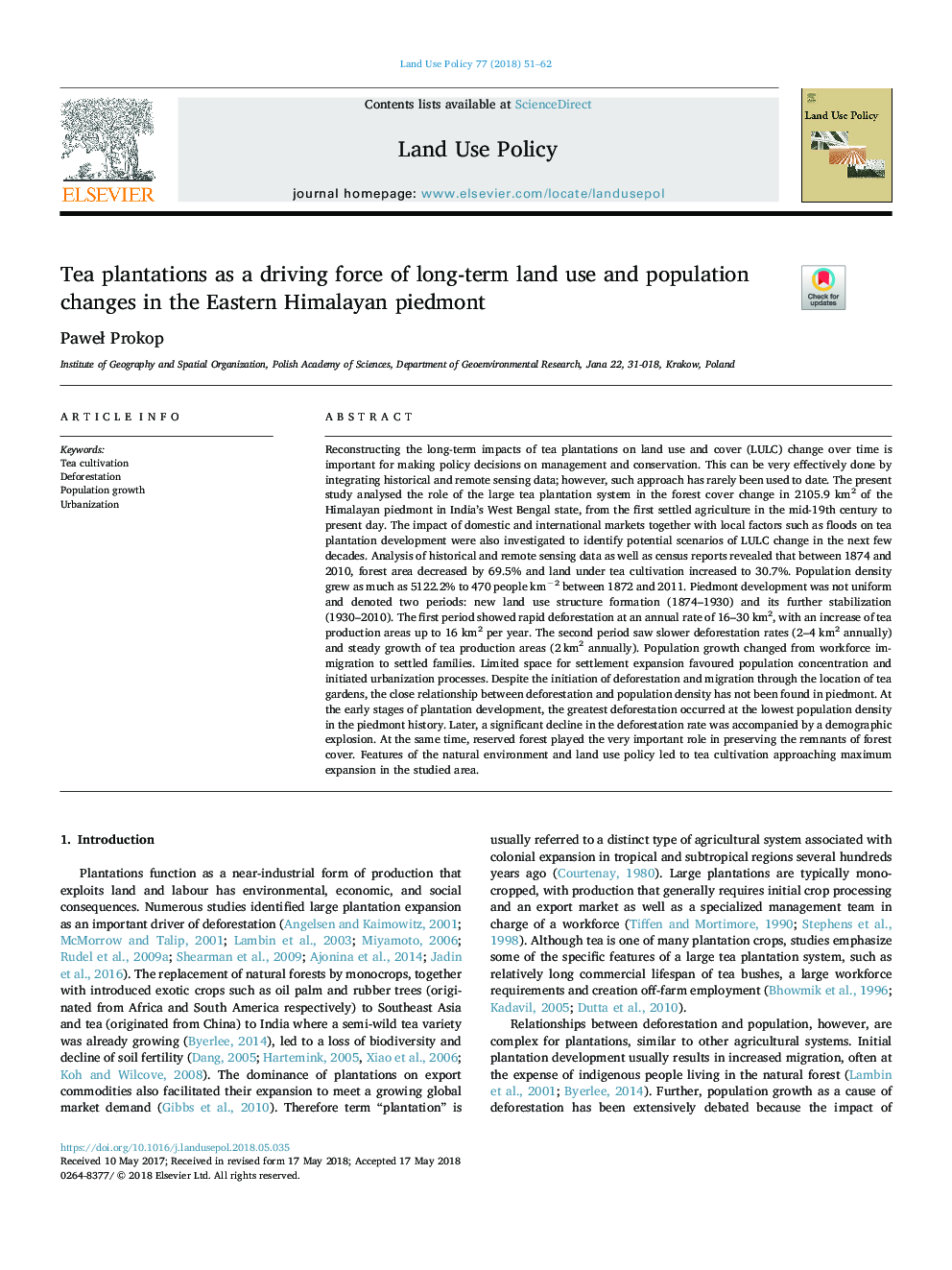| کد مقاله | کد نشریه | سال انتشار | مقاله انگلیسی | نسخه تمام متن |
|---|---|---|---|---|
| 6546112 | 1421806 | 2018 | 12 صفحه PDF | دانلود رایگان |
عنوان انگلیسی مقاله ISI
Tea plantations as a driving force of long-term land use and population changes in the Eastern Himalayan piedmont
ترجمه فارسی عنوان
گیاهان چای به عنوان یک نیروی محرکه استفاده طولانی مدت از زمین و تغییر جمعیت در حومه شرقی
دانلود مقاله + سفارش ترجمه
دانلود مقاله ISI انگلیسی
رایگان برای ایرانیان
کلمات کلیدی
کشت چای، جنگل زدایی، رشد جمعیت، شهرنشینی،
موضوعات مرتبط
علوم زیستی و بیوفناوری
علوم کشاورزی و بیولوژیک
جنگلداری
چکیده انگلیسی
Reconstructing the long-term impacts of tea plantations on land use and cover (LULC) change over time is important for making policy decisions on management and conservation. This can be very effectively done by integrating historical and remote sensing data; however, such approach has rarely been used to date. The present study analysed the role of the large tea plantation system in the forest cover change in 2105.9 km2 of the Himalayan piedmont in India's West Bengal state, from the first settled agriculture in the mid-19th century to present day. The impact of domestic and international markets together with local factors such as floods on tea plantation development were also investigated to identify potential scenarios of LULC change in the next few decades. Analysis of historical and remote sensing data as well as census reports revealed that between 1874 and 2010, forest area decreased by 69.5% and land under tea cultivation increased to 30.7%. Population density grew as much as 5122.2% to 470 people kmâ2 between 1872 and 2011. Piedmont development was not uniform and denoted two periods: new land use structure formation (1874-1930) and its further stabilization (1930-2010). The first period showed rapid deforestation at an annual rate of 16-30 km2, with an increase of tea production areas up to 16 km2 per year. The second period saw slower deforestation rates (2-4 km2 annually) and steady growth of tea production areas (2â¯km2 annually). Population growth changed from workforce immigration to settled families. Limited space for settlement expansion favoured population concentration and initiated urbanization processes. Despite the initiation of deforestation and migration through the location of tea gardens, the close relationship between deforestation and population density has not been found in piedmont. At the early stages of plantation development, the greatest deforestation occurred at the lowest population density in the piedmont history. Later, a significant decline in the deforestation rate was accompanied by a demographic explosion. At the same time, reserved forest played the very important role in preserving the remnants of forest cover. Features of the natural environment and land use policy led to tea cultivation approaching maximum expansion in the studied area.
ناشر
Database: Elsevier - ScienceDirect (ساینس دایرکت)
Journal: Land Use Policy - Volume 77, September 2018, Pages 51-62
Journal: Land Use Policy - Volume 77, September 2018, Pages 51-62
نویسندگان
PaweÅ Prokop,
